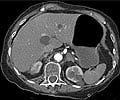A smoking cessation effort led by non-medical professionals was successful in the short term in the Appalachian region of the country, but quit rates trailed off in the long term.
A smoking cessation effort led by non-medical professionals was successful in the short term in the Appalachian region of the country, but quit rates trailed off in the long term. This region has high smoking rates and tobacco is often a cash crop, while income and education levels are low.
"After a year, the initial promising quit rates were not sustained," said Mary Ellen Wewers, Ph.D., M.P.H., professor of public health at The Ohio State University College of Public Health. "This shows us that we need to think of smoking as a chronic condition similar to diabetes and high blood pressure, and management needs to be long term and intense."Wewers and colleagues studied the effects of a smoking cessation intervention among more than 300 women in Ohio's Appalachian region. Results of this study are published in Cancer Epidemiology, Biomarkers & Prevention, a journal of the American Association for Cancer Research, as part of a special focus on tobacco in the December issue.
The Appalachian region is not as heavily studied as minority populations in urban areas, but Wewers said they often suffer from the same health-damaging socio-economic factors.
In the current study, only half of the participants had a high school degree. About half worked as unskilled laborers, and almost half (45 percent) had household incomes less than $20,000 annually. All of the women participants smoked. Wewers and colleagues randomly assigned half of the participants to a control group and half to an intervention group.
The control group received a personalized letter from their physician who advised them to quit smoking and requested they schedule a clinic appointment to discuss cessation methods.
The intervention group was treated more aggressively; smokers were visited by a female lay health adviser from the Appalachian region who was an ex-smoker. Deemed by the participants as credible, the advisor counseled them about the difficulties of quitting smoking and offered behavioral and pharmacological interventions. Although the lay leaders consulted regularly with a nurse, that nurse did not interact directly with the study participants.
In this study, Wewers said the intervention group saw their counselor weekly for four weeks and then every other week for four more weeks. After that, there was no additional contact with the lay health advisor, which she suggested may be the reason for the high rate of relapse.
Source-Eurekalert
RAS
 MEDINDIA
MEDINDIA




 Email
Email










